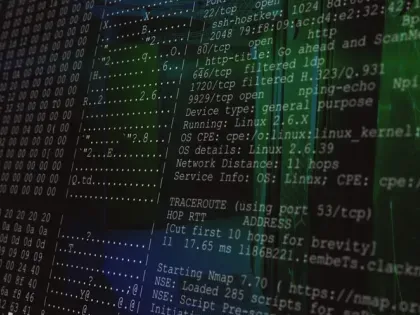Remote Access Security Vulnerabilities & Strategies

Common Remote Access Security Threats
After COVID, enterprise IT security got turned on its head. As the world adjusted to working from home, and continues to, IT teams worked overtime to enable remote access for millions of employees.
This transition has gone smoothly for most organizations, but many security gaps still remain years later. The SolarWinds data breach is a worrying example. It shows how vulnerable organizations are to malicious activity in our changing risk environment.
Here’s a breakdown of the most common vulnerabilities associated with remote access:
1. Lack of established protocols
As most IT security teams were forced to rapidly implement ad hoc solutions for remote access during an unpredictable time, the result is a lack of well-defined remote work cybersecurity policies at many organizations that continues to this day.
Documenting policies, protocols, and authorized software is the first step in mitigating risk throughout your attack surface. From there, you can start to enforce changes that will improve security performance across your expanding digital ecosystem.
2. Unsecured networks
Now that your team is remote or more dispersed, your employees are all network administrators. Are their home networks secure?
The answer to this question keeps IT security pros up at night. Many home internet users don’t even secure their networks with basic password protection. Others connect to public networks without a VPN.
Working from home or a remote office network means that there is 3.5x likelihood to have at least one family of malware and a 7.5x more likelihood to have five or more.
Bringing cybersecurity to the top-of-mind for your remote workforce is important in successfully educating employees on the new risks their work environment presents. Conducting training for security best practices, as well as discussing your organization’s cybersecurity standing and vulnerabilities with the entire workforce are both potential ways to combat network threats.
3. Phishing
Social engineering has a new dimension now that employees aren’t in the same physical space. It’s much easier to impersonate a colleague when they’re not sitting next to you, and in the current stressful environment some emotionally driven phishing emails are working better now than ever before.
To make matters worse, phishing attacks have become more common and more sophisticated at a time when employees are increasingly at risk of being distracted.
Now’s the time to double down on training and make verifying messages a normal practice. A regime of phishing tests and education can make all the difference when it comes to preventing costly breaches.
4. Unauthorized apps
Unauthorized software is a common entrypoint for ransomware attacks. Monitoring software and integrations is very important, especially when workers are at home with others who may be installing software on their devices.
Making proactive decisions about your tech stack can go a long way toward preventing unauthorized app use. For example, by making a secure video chatting or collaboration tool available, you reduce the likelihood of employees going out of their way to install their own (less secure) solutions.
In addition, implementing single sign-on technology can help IT security teams control access and set security permissions across multiple applications.
5. Unauthorized access to devices
When the only devices capable of accessing sensitive data are in the same building, it’s relatively easy to keep them under lock and key.
But with remote work and the physical locations of your workforce and sensitive information further apart, the chances of unauthorized users accessing sensitive data through employees’ computers, phones, and tablets increases exponentially.
Any machine that is capable of connecting to your network should be protected using multi-factor authentication, automatic session timeouts, and access monitoring to prevent unauthorized users from getting into the data, even if they have the device.
3 Cybersecurity Strategies for a Remote Workforce
In 52% of cases, corporate-issued devices are used by family members or trusted friends. These assets also share the same network as potentially insecure IoT devices such as alarm systems, smart TVs, refrigerators, and more. To create the most secure environment, here are three ways to build better cybersecurity for a remote workforce strategies.
1. Reduce over-dependence on traditional network controls.
The network perimeter is one of the most closely managed and watched elements of any comprehensive security program. But as the perimeter has expanded to the home office, the attack surface has grown substantially.
To protect your organization, reduce your over-dependency on local trusted networks and physical-based network controls. Instead, invest in technologies and operations that better harden workstations, services, and sensitive data while still enabling a successful remote workforce.
Adopting a zero-trust security model, where each user is verified before they connect to the corporate network, is particularly effective. Zero-trust combines several security practices including network segmentation, authentication, and least-privilege access (meaning users can only access data, networks, and applications for which they have a business need).
2. Improve your patching cadence
Unpatched systems are one of the leading causes of risk exposure – yet organizations continue to lag in patch management. Studies show that some of the most common vulnerabilities and exposures (CVEs) used in ransomware attacks have been known for almost a decade, impacting everyday applications such as Adobe Acrobat, Java, and Windows.
Patches are available, but they have to be applied to be effective, less organizations remain vulnerable. Indeed, new vulnerabilities will continue to be discovered, published, and weaponized throughout the next several months and it’s imperative that systems that are vulnerable to attack are updated and patched.
Use Bitsight for Security Performance Management to identify your organization’s digital assets – wherever they’re located – and continuously monitor for vulnerabilities, such as unpatched systems and applications.
3. Mitigate risk through education
Malicious actors will continue to capitalize on the adoption of remote work and users should be educated and reminded continuously of the methods used as attack vectors.
Consider the following:
- Implement strict yearly training for employees and interconnected vendors to bring everyone up to speed on changing threats and how to protect the company.
- Make them aware that these threats and best practices extend beyond the corporate network and into the home.
- To further limit the attack surface exposed to corporate devices, encourage users to also follow best practices offered by manufacturers of their own personal devices.
- Share specific recommendations and best practices directly with employees.
Remote access next steps
IT security teams are still playing catchup when it comes to securing the evolving existence of remote workforces. We’re committed to making their jobs easier through our Bitsight cyber risk management solutions for monitoring, managing, and mitigating cyber risks. For more information on reducing risk and finding efficiencies so your employees can stay home and stay safe, check out these resources for cybersecurity for a remote workforce.


